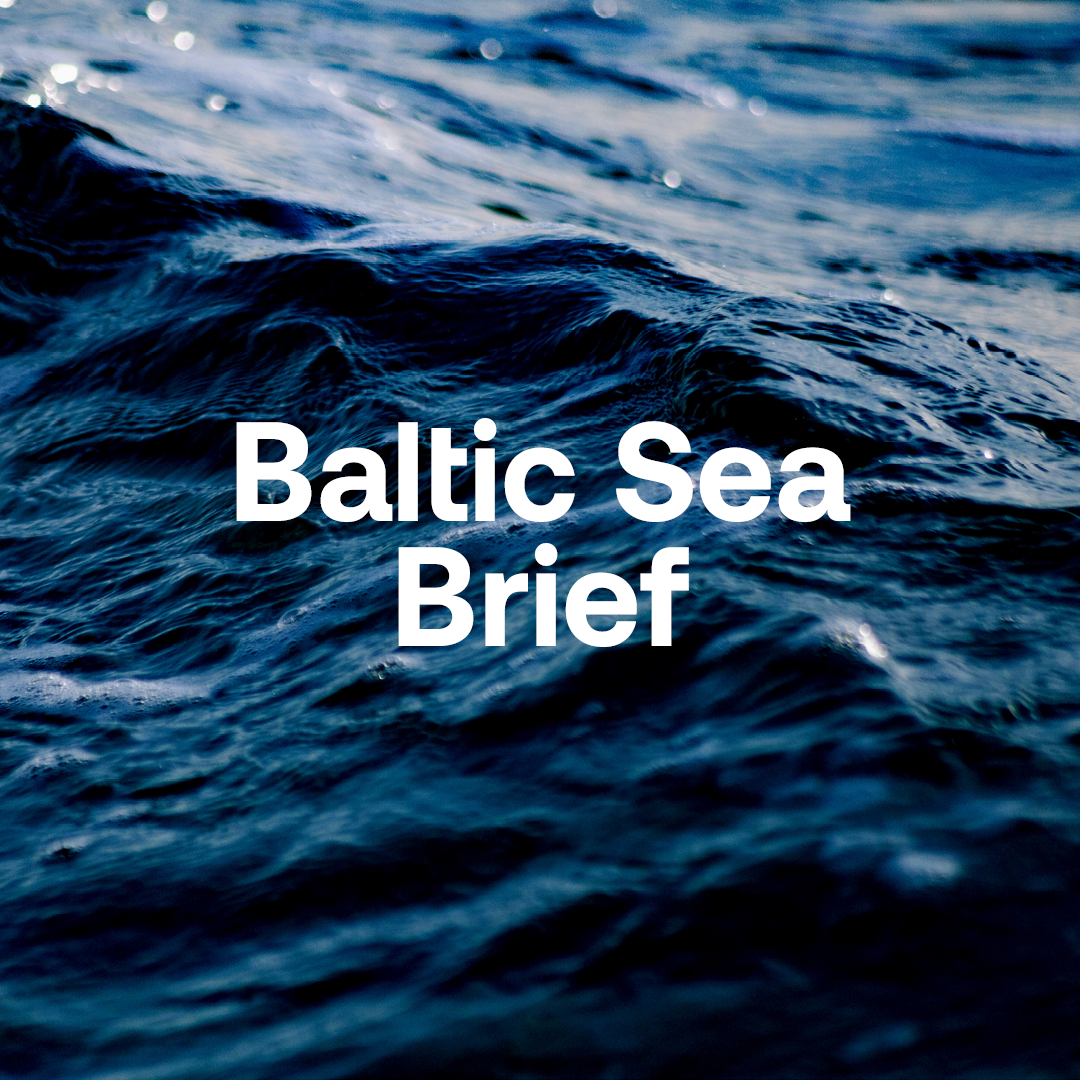Science is the best knowledge we have – but what happens when evidence is uncertain and reality more complex than the figures suggest? The scientific advice from the International Council for the Exploration of the Sea (ICES) gives politicians a shaky foundation on which to base their decision on next year’s fishing quotas, with an imminent risk that we will repeat previous mistakes – an increase in quotas will result in new alarms and crises.
The International Council for the Exploration of the Sea (ICES) has recently published its scientific advice for Baltic Sea fisheries for 2026. The advice sets out how much can be caught from each fish stock without jeopardizing the regrowth of young fish and provides support for decision-makers when setting next year’s fishing quotas.
This year’s advice shows a general downward trend for several fish stocks. All herring stocks in the Baltic Sea, except in the Gulf of Riga, are below the limit (Btrigger*) where precautionary measures must be taken to avoid a significant decline in reproduction and recruitment.

Herring in the central Baltic Sea and the Gulf of Bothnia are below the Btrigger* threshold. Fishing must therefore be kept at low levels and measures need to be taken to ensure that the stocks return to long-term sustainable levels.
Even though herring in the central Baltic Sea is below Btrigger, ICES states that fishing can increase by 26 percent compared to the advice for 2025, referring to an increase in the number of young fish. This is a mistake we have made several times before – fishing increases one year because there were supposed to be more fish (strong year classes) in a particular stock, but the next year the fish were gone and everything collapsed. In the Gulf of Bothnia, however, ICES recommends a 16 percent reduction in fishing as the stock has shrunk, and the recruitment of young fish has been low. For sprat, fishing can be increased by 36 percent, according to ICES headline advice.
At first glance, the figures in ICES’s headline advice, the summary of ICES advice on the first page of the advice document, may give the impression that it is fine to increase the fishing. But the reality is more complex. The data is uncertain and provides a narrow picture of the reality – conclusions risk being based on inadequate data, while essential details are overlooked. The result is fishing quotas that are set on shaky ground, without any long-term perspective.
Uncertain and inadequate data
ICES’ advice is characterized by several problems, including an uncertain, incomplete, and sometimes inaccurate data, something that ICES itself often points out. A telling example is the advice for sprat fishing in 2026: after three years of very low recruitment of young fish to the stock, the trend is now considered to have reversed, which means that fishing can be increased by 36 percent. However, this conclusion is based solely on one unconfirmed survey in the Gulf of Finland.
At the same time, fishing pressure on sprat in 2024 was higher than what is considered sustainable under EU fisheries legislation, as Russia fished more than expected. The war in Ukraine has also interrupted data sharing between Russian and European researchers, further complicating a reliable assessment of stocks and their development. It is also difficult to distinguish between herring and sprat, which means that catches are incorrectly reported to the authorities, thus contributing to further uncertainty in ICES’s advice.
All of this is essential information that must be included in the decision on next year’s fishing quotas, if a serious assessment is to be made. Anything else would be irresponsible.
Sprat is doing relatively well. At the same time, the recruitment of young fish was very low in 2021-2023. Recruitment is now estimated to have increased, but the data is uncertain. To ensure that the positive trend continues, fishing should be kept at a low level.

This will happen next
In Sweden, the Swedish Agency for Marine and Water Management (SwAM) drafts the proposal for Sweden’s position in the quota negotiations, which the Swedish Government Offices then adjusts based on comments from commercial fishermen and other interest groups. In August, the European Commission presents its quota proposal based on ICES advice. The member states then draw up their positions for the negotiations. The Committee on the Environment and Agriculture and the EU Committee in the Swedish parliament give their opinions, and Sweden’s position is finalized in September or October. The government, through the Minister for Rural Affairs Peter Kullgren, receives its mandate to negotiate in the Council of Ministers. Negotiations begin in Baltfish, the member states’ coordination forum for Baltic Sea fisheries, where Sweden holds the chair between July 2025 and July 2026.
How should the government act?
It takes courage and determination to stand up for our shared marine resources. Strong public opinion and the vision of a Baltic Sea teeming with life should give the government the support it needs.
The government and the Minister for Rural Affairs, Peter Kullgren, have taken several steps forward over the past year to protect Baltic Sea fish stocks, but the biggest and most important steps remain to be taken. It is about daring to question the current system that regulates fisheries and tirelessly point out the risks in ICES advice, and even saying no to increased quotas, even if this risks Sweden ending up in a minority. Perhaps a clear Swedish voice can also inspire other countries, such as Finland, to question the scientific basis and work for more cautious quotas.
1. Promote fishing quotas that are lower than ICES advice, considering uncertainties in the advice and the worrying situation for several stocks.
2. Emphasize that the situation is severe for herring, even if ICES advice indicates that fishing can increase in the central Baltic Sea. Among other things, consideration must be given to the fact that the stock is below the Btrigger* limit, which by law requires measures to increase the size of the stock.
3. Recall the critical situation for Baltic cod and the values that have been lost. Historically, we have caught around 150,000 tons of cod per year. Today, there is no targeted fishing for cod as both Baltic Sea stocks have collapsed. Healthy herring stocks are essential for cod to have a chance to recover.
4. Emphasize that the Council of Ministers and the countries around the Baltic Sea have the power to influence the development of fish stocks and future returns – by fishing less now, we can fish more and sustainably in the long term. The alternative is continued depletion and ultimately fishing bans.
5. Highlight the need for contingency quotas, i.e., quotas with a margin earmarked for ensuring food security. In light of the current global situation, we cannot afford to lose such an easily accessible crisis food as herring.

The situation for cod is catastrophic. The western stock has extremely few mature fish and high mortality among young individuals. The average length is only 32 cm. The eastern stock is currently poorly mapped due to Russian fishing, but there are no indications that either stock will recover in the foreseeable future.

ICES advice for fishing opportunities in 2026
| Herring |
|---|
| Stock: Central Baltic Sea Quota for 2025: 83 881 tons (excluding Russian share) ICES advice for 2026: 120 378 – 157 996 tons BalticWaters’ comment: The stock was overfished in 2024. Misreporting of herring and sprat remains, making the ICES advice uncertain. The ICES headline advice conflicts with the 5 percent rule, Article 4.6 in the EU Multiannual Plan (MAP) for the Baltic Sea, meaning that the quota needs to be reduced by 18 percent compared to the advice for 2025. Thus, the quota needs to be set at maximum 103 073 tons, excluding Russian share. Bestånd: Gulf of Bothnia Kvot 2025: 66 446 tons ICES råd för 2026: 55 869 – 62 684 tons BalticWaters’ comment: The fish in the stock have become fatter. At the same time, the stock consists of few older individuals, which has a negative impact on the stock’s reproductive capacity. Even if no fishing takes place in 2026, the stock size will not increase to reach the Btrigger* limit in 2027. The ICES headline advice conflicts with the 5 percent rule, Article 4.6 in the EU Multiannual Plan (MAP) for the Baltic Sea, meaning that the quota needs to be reduced by 62 percent compared to the advice for 2025. The quota needs to be set at maximum 25 560 tons. |
| Sprat |
|---|
| Quota for 2025: 139 500 tons ICES advice for 2026: 176 056 – 230 518 tons (excluding Russian sharel) BalticWaters kommentar: The increase in the advice is mainly based on an unconfirmed and geographically limited survey showing increased recruitment of young fish. At the same time, recruitment of young fish was at very low levels in 2021–2023. Read the full advice on the ICES website. |
| Cod |
|---|
| Stock: Eastern cod Quota for 2025: 430 tons (bycatch only, excluding Russian share) ICES advice for 2026: 0 Stock: Western cod Quota for 2025: 266 tons (bycatch only) ICES advice for 2026: 0 BalticWaters‘ comment: Both cod stocks are in very poor condition. Measures to reduce the effects of eutrophication on oxygen levels in the Baltic Sea could help the stock to recover, as could measures to reduce cod bycatch. |


The brief in short
The ICES advice for fishing quotas for 2026 shows that several fish stocks in the Baltic Sea are in poor condition. Despite this, quotas may be increased for some of them. There are several risks, especially as the advice is characterized by considerable uncertainty in, for example, the data used. Given the severe situation, fishing pressure must be kept low for the time being. Ahead of this year’s quota decision, the Swedish government must show courage and question the system that currently allows continued overfishing.
*Btrigger: A scientific term and reference point in fisheries management. If the Btrigger is exceeded, it means that the proportion of sexually mature fish in a fish stock is at a low level. If this happens, appropriate management measures must be taken to ensure that the stock is rebuilt to levels that can provide maximum sustainable yield (MSY) in the long term.

